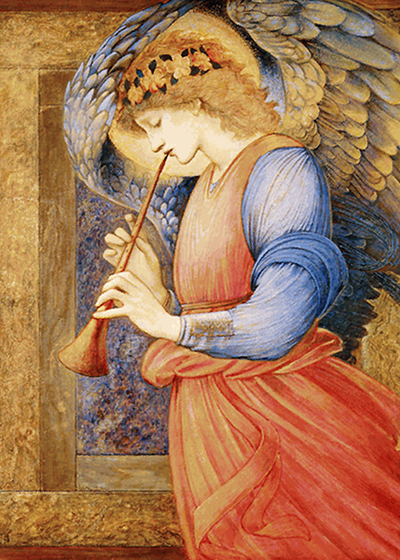Being involved in many artistic mediums Edward Burne-Jones drew inspiration for the 1878 painting called An Angel Playing a Flageolet from a stained-glass window that he produced for the parish church in Lyndhurst, Hampshire, in 1862-63. The painting is now displayed in the Museum of Liverpool. The theme of angels and other ethereal scenes is a subject that often appears in the work of Burne-Jones.
However, he also holds fascination with historical decorative objects that can often be seen in his work across various mediums. With the use of gold and tempera in this and other pictures, we can witness the vibrant colours and tones that help to enhance the heavenly setting of this Angel. He combines the egg yolk and water and in this case gold to produce Tempera. This product is painted on to paper that is later mounted on canvas.
Tempera sounds a peculiar product to use for painting, but in fact, it was popular from early times and used for painting before the introduction of oil colours. Tempera can produce art that maintains its integrity for a long time and is seen in several pieces of art dating back to Egyptian times that are still in remarkable condition. Being one of the last pre-Raphaelite painters Burne-Jones was not alone in using tempera during this period, but few were as skilful in its use and did not display his ability to produce such quality of work.
For some reason, he kept this picture in his studio for ten years before finally deciding to sell it. Although this time of his life both personally and professionally was exceedingly difficult for him with a previous model and lover attempting to commit suicide and being the subject of many bad reviews, he decided not to show any work for some time. Did he have a personal attachment to the model in this painting or perhaps he enjoyed the painting so much that he was reluctant to part with it? Burne-Jones could perhaps be a perfectionist since he laboured with such intensity over the detail of all his work. Often criticised for taking so long to produce his paintings even today many find his work brilliant in technical ability yet boring in the subject.




